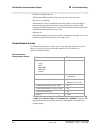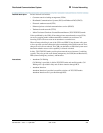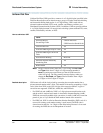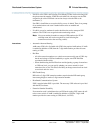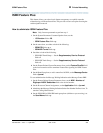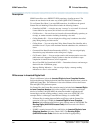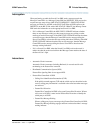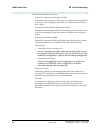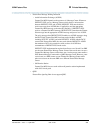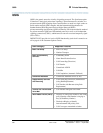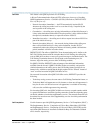
ISDN Feature Plus B Private Networking
Administration for Network Connectivity
CID: 77730 555-233-504 — Issue 1 — April 2000
356
Description
ISDN Feature Plus uses a DEFINITY ECS proprietary signaling protocol. The
features do not function in the same way as their QSIG or DCS counterparts.
To use Feature Plus, Phase I, you need DID extensions. In addition to the general
Feature Plus call handling, Feature Plus includes the following features:
• Centralized AUDIX — A simple, one step “coverage” to voice mail. If voice mail
is unavailable for any reason, the call does not cover elsewhere.
• Call Diversion — You can divert (or forward) calls unconditionally, upon busy or
no reply, to another extension including forwarding voice mail.
• Calling Number ID — You can display the calling party’s number to the called
party during alerting and after answer.
• Calling Name — You can assign the Calling Name Feature Plus identifier with a
maximum size of 15 bytes or the maximum network subaddress size, whichever is
lower.
• Connected Line Identification Presentation (COLP) — You can assign display
forwarded-to party information to the calling user’s display.
• Call Transfer - Basic — You can assign transfer calls between parties across the
public network is supported. Display updates at the time of transfer or upon
completion of transfer, however, are not supported.
• Served User PBX for Centralized AUDIX — Determines where to send messages
destined for the AUDIX hunt group.
• Message Waiting Indication — You can assign display a message waiting
indication on a user’s voice terminal.
Differences in Inserted Digits field
There is a difference in how the Inserted Digits to form Complete Number
field on the Message Waiting Indication Subscriber Number Prefixes form is used for
QSIG and Feature Plus. This difference is due to the difference in how the Feature
Plus and QSIG-TSC platforms operate.
For Feature Plus, the Feature Plus extension must be included in the Inserted Digits
to form Complete Number field, while for QSIG, only the higher order digits
need to be included. (In QSIG MWI, the subscriber number is appended to the
inserted digits and the resulting number is used to route over a QSIG TSC.) For
example, Dallas is a Message Center PBX and Chicago is a remote PBX:
• If Feature Plus is running between Dallas and Chicago and the Feature Plus
extension in Chicago is 82000, the Inserted Digits to form Complete
Number field administered in Dallas to get to Chicago must be 3035382000. The
Routing Digits (AAR/ARS Access Code) field also needs to be filled in
appropriately.
• If QSIG is running between Chicago and Dallas, the Inserted Digits to form
Complete Number field must contain 30353. The Routing Digits
(AAR/ARS Access Code) field also must be filled in appropriately.)



